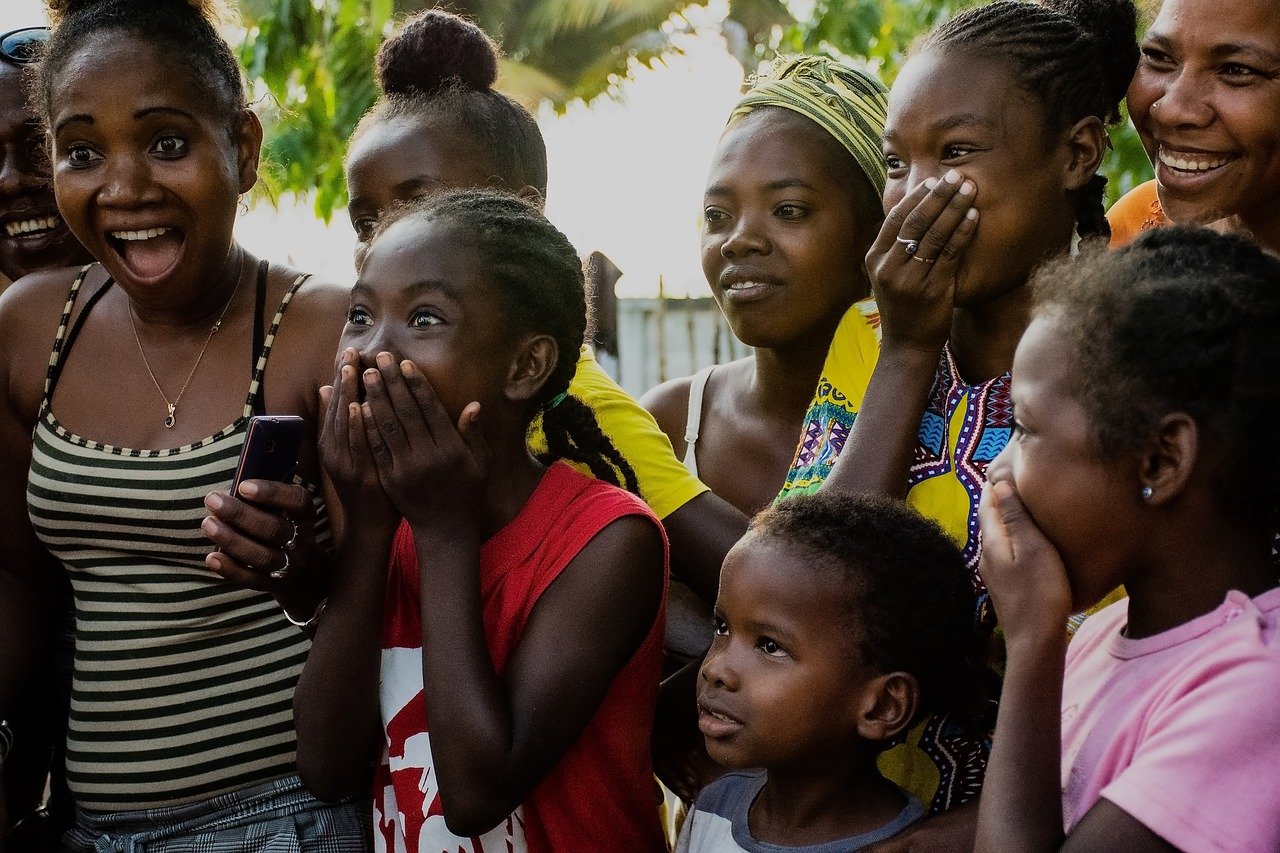HIV in Children sets off alarm bells at the International Conference on AIDS and STIs ICASA 2023
- February 13, 2024
- Africa / HIV
- By The Bureau
- Read in French

HIV in children remains a major public health concern, and was a recurring topic, with at least four sessions devoted to the issue by various speakers at the 22nd International Conference on AIDS and STIs in Africa (ICASA) held in Harare, Zimbabwe. Due to slow progress in scaling up access to treatment for children living with HIV, the 90-90-90 targets, which envisioned that 90% of people living with HIV know their status, 90% of people who know their status receive treatment, and 90% of people who receive treatment are virally suppressed and on sustained treatment, have not been met.
Context
According to the Joint United Nations Programme on HIV/AIDS (UNAIDS), new HIV infections among children had declined by more than half (54%) between 2010 and 2020. This was mainly the result of the increased availability of antiretroviral therapy for pregnant and breastfeeding women living with HIV. This momentum has since considerably stagnated. Significant gaps remain, particularly in West and Central Africa, where more than half of HIV-positive pregnant women are not receiving treatment. UNICEF confirmed this negative trend. In the run-up to World AIDS Day 2022, in its statement on 28 November 2022, it warned: HIV prevention and treatment among children, adolescents and pregnant women has virtually stalled with many regions failing to return to the service coverage rates achieved before the COVID-19 pandemic.
According to the UNAIDS report, the COVID-19 pandemic hurt ARV treatment coverage among pregnant and breastfeeding women. Screening of infants and children exposed to HIV was inadequate, leaving more than two-fifths of children living with HIV undiagnosed. In 2021, more than 75,000 children contracted HIV as a result of failure to diagnose and treat their mothers during pregnancy. The number of children on treatment has declined globally since 2019, with nearly 800,000 of the 1.7 million HIV-positive children left stranded without antiretroviral treatment in 2022. Only 40% of children living with HIV had a suppressed viral load, compared with 67% of adults. In addition, around 150,000 new HIV infections were recorded among children, four times more than the target of 40,000 new infections set for 2020. Nearly two-thirds of untreated children (those who cannot be detected using HIV testing during post-natal care visits) are aged between 5 and 14.
UNICEF’s HIV care website revealed that, of the 1.54 million [1.20 million-2.11 million] children aged 0-14 living with HIV worldwide, only 57 [44-78] percent were receiving life-saving antiretroviral therapy in 2022. This, despite the evidence that, early initiation of antiretroviral drugs in HIV-positive infants can save their lives. Globally, children under 15 account for around 4% of all people living with HIV, 10% of new HIV infections and 13% of all AIDS-related deaths. Children under one year of age are among the most vulnerable to HIV. Moreover, the percentage of children aged 0-4 living with HIV and not receiving antiretroviral treatment has risen over the past seven years, reaching 72% in 2021, a level as high as in 2012.
“Children are falling through the cracks because we are collectively failing to identify them, diagnose them, and provide them with life-saving treatment,” emphasized Anurita Bains, Deputy Chief of UNICEF’s HIV/AIDS Section. She further pointed out that, “if progress remains elusive, over 300 children and adolescents will continue to lose their battle against AIDS every day“. Growing treatment disparities between children and adults compound this situation.
Winnie Byanyima, UNAIDS Executive Director, stated in her 13 December 2022 report to the 51st meeting of the UNAIDS Programme Coordinating Board that, “1.7 million children are living with HIV worldwide. Only half of them are receiving treatment, compared with 76% of adults. And despite prevention methods being available, 160 000 children acquired HIV in 2021. Around the world in 2021, children made up 15% of all AIDS-related deaths although they are only 4% of the total of people living with HIV. We will not allow this shameful and avoidable injustice to continue”.
Strong action needed
In the face of this gloomy picture, despite the progress achieved, it is imperative to take consistent action to eliminate AIDS in children by 2030. This is the reason behind the creation of the Global Alliance to End AIDS in Children by UNAIDS, UNICEF, WHO and other partners, including civil society movements such as the Global Network of People Living with HIV, national governments of the most affected countries, and international partners such as PEPFAR and the Global Fund. The alliance was announced at the AIDS International Conference in Montreal, Canada, on 1st August 2022. Presented at the ICASA 2023 conference, the Alliance intends to mobilize the leadership, funding and action needed to end AIDS in children.
Twelve African countries have joined the alliance during the first phase: Angola, Cameroon, Côte d’Ivoire, Democratic Republic of Congo, Kenya, Mozambique, Nigeria, South Africa, Tanzania, Uganda, Zambia and Zimbabwe. The aim is to ensure that all HIV-positive children have access to treatment by the end of the decade and to prevent new infections among infants.
Meeting the challenges
Challenges relating to quality of care have been identified, such as the low uptake of testing, gaps in ARV treatment initiation, poor retention rates and low adherence to HIV treatment. Innovations are essential for improved care. In the view of UNAIDS, new testing technologies and more effective and affordable paediatric treatment options are increasingly available. These include early detection through point-of-care testing and HIV self-testing to diagnose children exposed to the virus at an early stage. Moreover, specific pediatric treatments for children have been approved, and are better tolerated and more effective. In addition, they have become more affordable. It is also essential to closely monitor children on antiretroviral treatment, with periodic adjustments of doses based on weight, and to ensure that medical appointments are kept. Developing long-acting injectable antiretrovirals opens up new possibilities for curative or preventive treatment. However, their prescription and monitoring procedures need to be clarified.
The way forward
For the UNAIDS, one of the priorities for the next five years is to expand rights-based family and household testing and to optimize pediatric treatment to diagnose these children, put them on treatment and keep them in lifelong care. Prevention of new HIV infections in pregnant and breast-feeding women is also of paramount importance in the elimination of paediatric HIV.
For this reason, UNAIDS intends to take three necessary actions to put an end to new HIV infections among children in the targeted countries.
- First, ensure that screening and treatment reach pregnant women as early as possible. According to UNAIDS, 66,000 new HIV infections were recorded among children because their mothers had not received treatment during pregnancy or breastfeeding.
- Secondly, ensure continuity of treatment and viral load suppression during pregnancy, breastfeeding and for life. According to UNAIDS, 38,000 children were newly infected with HIV because their mother’s treatment was interrupted during pregnancy and breastfeeding.
- Thirdly, prevent new HIV infections in pregnant and breastfeeding women. According to UNAIDS, 35,000 new infections among children occurred because a woman was infected with HIV during pregnancy or breastfeeding.
Where do communities fit into the picture?
Communities must be involved as essential partners in the fight against AIDS in children. Their active involvement will make it possible to design more effective and sustainable interventions because of their intimate knowledge of local needs and their resilience. In this respect, the World AIDS Day 2023 report published by UNAIDS highlights the essential role played by communities in the fight against AIDS and makes a call to action for decision-makers to encourage them to support the vital work of communities fully.
Rose Meku


